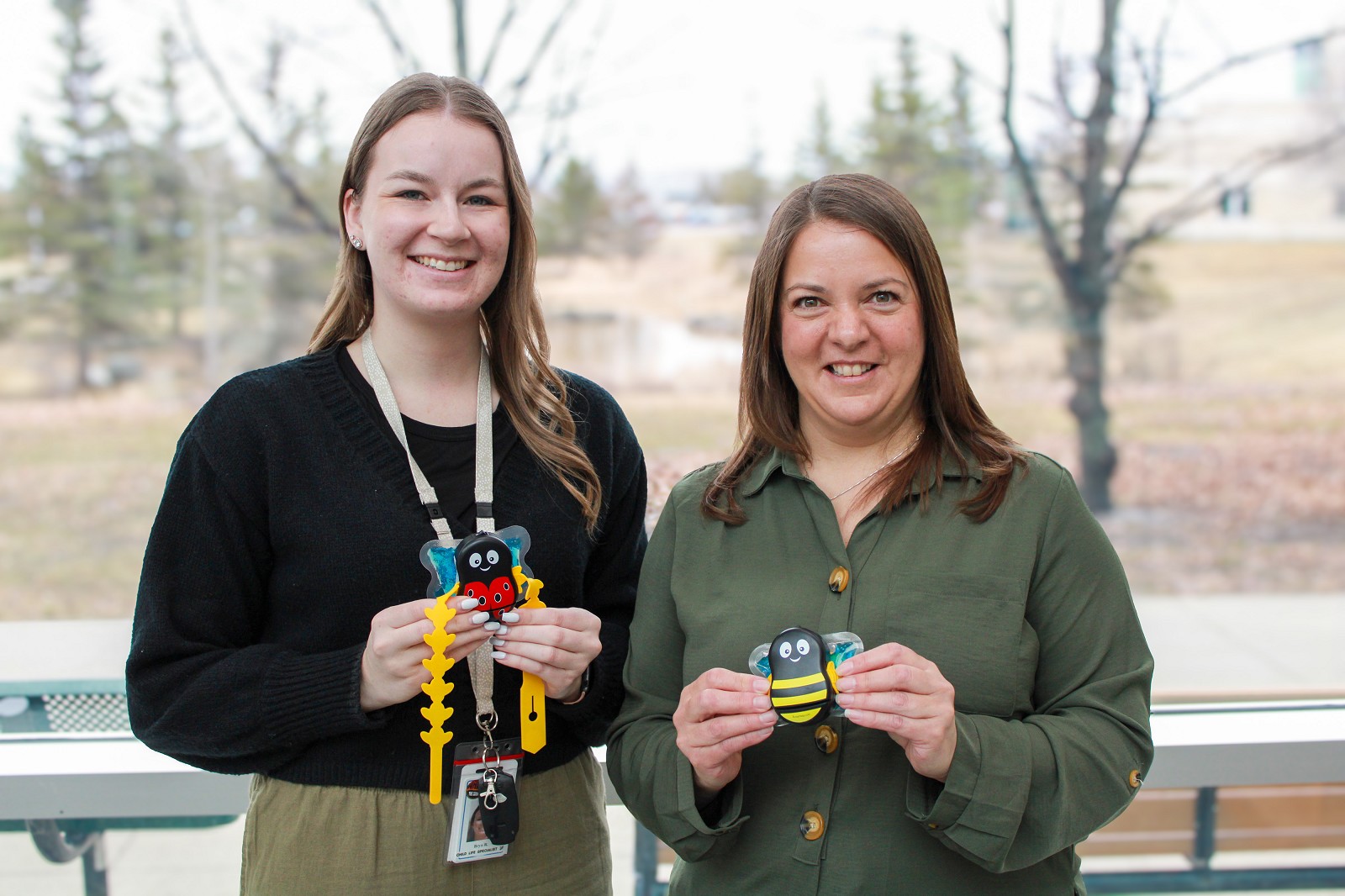Buzzy Bee Reduces Needle Pain and Anxiety for Children, Thanks to Family CARE Grant
Published Monday, July 7, 2025

(L-R) Bryn Roberts, Child Life Specialist, Paediatrics and Nicole Zuefle, RN, Paediatric Outpatient Services with the Buzzy Bee and Buzzy Ladybug units that are helping to ease needle pain and anxiety for children at the Thunder Bay Regional Health Sciences Centre.
Any parent who has held their child down for a needle knows the trauma. Those trusting, smiling eyes looking up at you as you jangle keys in front of them. Then the surprise, confusion, and pain on their face as the needle goes in.
You know the shot is the best thing for them in the long run. But your child doesn't. What you wouldn't give to take that pain away for them…
Thanks to your donations to the Thunder Bay Regional Health Sciences Foundation, you are now taking away the pain for dozens of children every week through a Family CARE Grant. A new and simple device called the Buzzy Bee helps to both distract the child and physically reduce the pain in a number of ingenious ways.
“Children can get pretty nervous and anxious about needles,” said Bryn Roberts, a Child Life Specialist at the Thunder Bay Regional Health Sciences Centre. That's changed since Buzzy Bee, she said. “We're noticing a big improvement on all needle pokes in both our paediatric inpatient and outpatient departments.”
The Buzzy Bee system is deceptively simple. As the name suggests, it looks like a cartoon bee, bright and colourful like a children's toy. Its “wings” are actually small ice packs that attach to the bee. The nurse or healthcare professional lets the child play with the bee for a while to become familiar. Then, they attach the icy wings and place it on the skin for 30-120 seconds to freeze the injection spot. They move Buzzy Bee up the arm (or leg or other spot on the body) just before the injection and start it “buzzing” to distract the child.
Moving up the arm rather than down is important because the buzzing vibrations need to be between the pain and the brain – another way Buzzy Bee helps reduce the pain sensation for children.
“The cold and vibration actually cause a kind of disconnect between the injection site and the pain signals travelling to the brain while the child focuses on the vibration,” Roberts said. “Essentially, Buzzy Bee helps to block the pain receptors.”
Overall, Roberts said, children aren't as anxious and there's less crying, leading to a much better patient experience. Buzzy Bee may also help future patient experiences since children are less likely to carry fear of needles for the rest of their lives.
The Buzzy Bee works for all kinds of needle pokes including vaccinations, blood work, and IV inserts. The system also comes in a Buzzy Ladybug design, which empowers children by giving them choice.
Roberts noted that children who visit the clinics often are most traumatized by needles. “We have a few patients who come fairly regularly for blood work. One patient in particular would get extremely anxious. We would have to use a lot of distraction techniques including a mild sedation, and there would be a lot of people in the room assisting. But so far since we've been using the Buzzy Bee, we can do blood work with this patient without the use of a mild sedation.”
The Buzzy Bee also reduces anxiety in parents as well as nurses and healthcare providers who regularly experience that trauma, albeit on a different level.
“It can be hard giving needle pokes and watching children go through all that pain and anxiety every day,” Roberts said.
Isn't it a great feeling to know that with Buzzy Bee, you're reducing pain in children and stress for everyone around? Find out more about how your support of the Health Sciences Foundation makes a big difference in the lives of patients through the Family CARE Grants Program:
healthsciencesfoundation.ca/familycare
Article by: Graham Strong